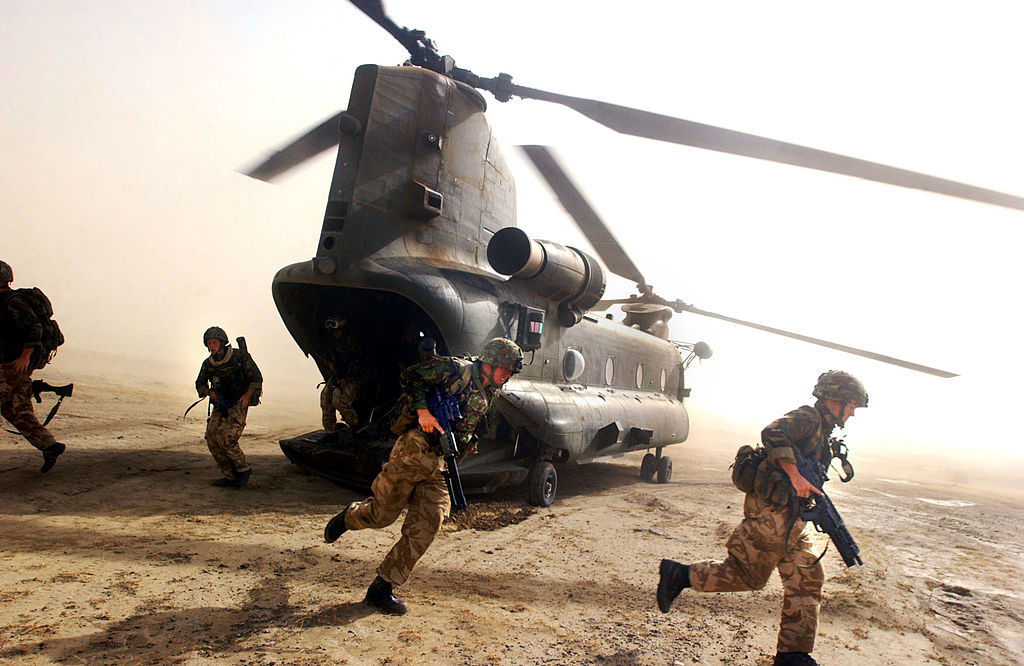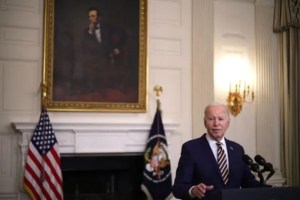‘How many thousands more Americans, daughters and sons, were you willing to risk?’ Biden asked critics of the decision to withdraw forces from Afghanistan last week. He has the support of the American public — most of whom also wanted to see troops leave Afghanistan after 20 years of fighting and 2,400 fatalities.
This risk aversion is one of the reasons America decided to withdraw its forces from Afghanistan. There’s a diminished appetite in the US for prolonged military involvement in the Middle East, especially large-scale deployments of ground troops that inadvertently cost lives. In the UK, the Ministry of Defence’s integrated review, which advocates reducing the size of the armed forces and concentrating on training and assistance and use of advanced technologies rather than combat, reflects a similar attitude.
Withdrawing from Afghanistan is part of a wider policy of disengagement from the Middle East. This is led by the Americans but other countries, including the UK, have been following willingly as they reprioritize against the threat from China.
And it comes despite a sharp decrease in the number of troops actually stationed in Afghanistan: American personnel numbers fell from 98,000 in 2011 to 14,000 in 2020. The UK currently has 1,000 non-combat personnel in Afghanistan compared with 10,000 in 2010. Although smaller compared to a decade ago, these forces had an important stabilizing effect in the country. Removing them is already having major consequences for Afghanistan and the wider region, where post-withdrawal arrangements are already unraveling. Afghanistan has seen a significant rise in violence since the removal of forces began and the Taliban have been advancing quickly, gaining ground, while the Afghan army has been fleeing.
It is clear as well that withdrawing troops from Afghanistan will have a wider impact across the whole of the Middle East. It may be that as American and British troops leave the country, it will have the opposite effect of provoking greater threats to smaller forces left behind and to diplomatic missions and the troops guarding them. Smaller forces are more vulnerable to attacks by terror organizations. Additionally, the West’s risk-averse attitude and the decision to withdraw are perceived as weaknesses by the Taliban and by Iran and its proxies, which motivates attacks in an attempt to prompt further disengagement. Examples of this include attacks on American personnel in Iraq and Syria perpetrated by Iranian-backed militias in the past two weeks.
The absence of American and other Nato forces means less control over territory as well as over the hearts and minds of the people, making it easier for al-Qaeda, Isis, Hezbollah and other terrorists to operate more freely. This will not only threaten the inhabitants of Middle Eastern countries but, because these organizations radicalize, recruit and train terrorists internationally, this poses a threat to homeland security in the US, the UK and elsewhere. Avoiding risk to troops in the Middle East could therefore result in greater risk to civilians on the streets of our cities.
The policy of disengagement also risks creating a power vacuum in the Middle East at a time of immense economic and political instability and rising threats in the region. Iran — which has stepped up its nuclear program — will take advantage of the situation by speeding attempts to expand its sphere of influence, strengthen its presence and influence in Syria, Iraq, Yemen and Lebanon and enhance support for terror groups that undermine and attack its rivals. This has already placed foreign forces and personnel in some of those countries at a greater risk.
Fewer Nato forces also gives Russia opportunities to expand its power and promote its interests in the Middle East. Thankfully, neither Iran nor Russia have the capability to establish a Middle Eastern hegemony. China does have this capability, however. It’s making strides in establishing a significant presence in the region, mostly through its expanding Belt and Road initiative. Biden may find that by displacing forces from the Middle East in order to confront China in the east, he is leaving the door open for China to make strategic advances in the Middle East. The future stability of the Middle East may soon depend on Chinese interests in the region.
The West’s shifting priorities will require adjustments from its regional allies. Israel and relatively moderate Sunni countries such as Egypt, UAE, Morocco, Saudi Arabia and Sudan, will need to deepen their cooperation in order to promote their collective security and relative power to thwart efforts by Iran, the Taliban, Isis and other terror organizations from destabilizing the region further, sowing destruction and violence. Support for such efforts from Nato members could help maintain the perception that western countries are dependable partners in the region, and help them keep a level of influence, even after they leave.
For over 20 years, Nato forces have made enormous sacrifices protecting populations from radicals and terrorists. Without committing to military intervention should things get worse, they are likely to see their hard-earned gains quickly disappear and their authority in the Middle East erode.
This article was originally published on The Spectator’s UK website.


















